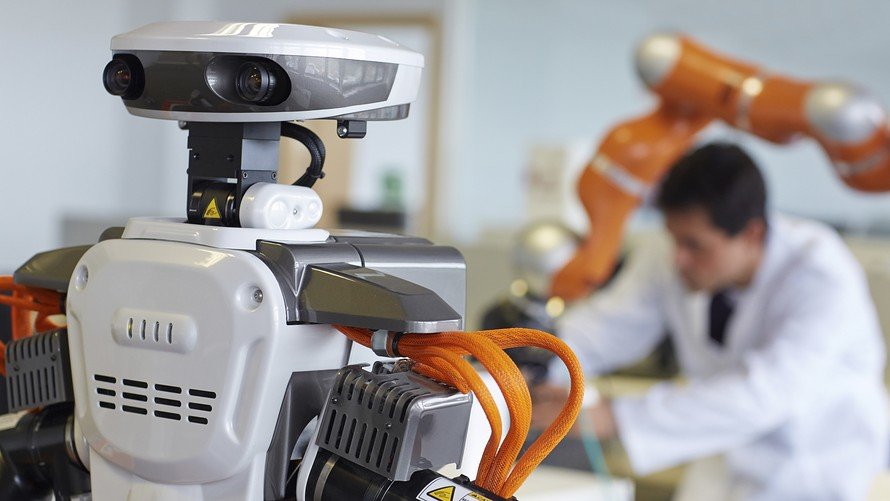
© Getty images
An assumption was that new jobs in new industries would take up displaced workers — but that hasn't happened
For most people, a secure, well-paid job is the difference between a reasonable life and penury. Today, changes in the structure of the work force driven by globalization and technology make this objective increasingly elusive.
Technology has exacerbated declines in employment and incomes by eliminating tasks and "de-skilling" many jobs.Robotics and complex computerized equipment has successfully replaced skilled labor. Computer software is now replacing journalists, synthesizing news items electronically by crawling the internet. Even traders in financial markets are being replaced by automated algorithms.
In the late-20th century, global supply chains allowed lower-paid workers to displace expensive counterparts in more developed countries. Initially, this occurred in manufacturing industries requiring limited skills. Over time, it encompassed more skilled jobs, spreading to services and professional work.
Communications, which allowed cheap real-time transmission of voice as well as near-instantaneous transfers of vast amounts of data and increasingly high-definition images, initially facilitated the relocation of production. Increasingly, it allows relocation of services such as engineering, architectural, accounting or legal services and even medical procedures.
In combination with remote command-and-control technology, originally developed for military applications, it is now possible to control highly automated production lines and even mines from distant sites.
Those changes affect incomes and the availability of jobs. U.S. median earnings have not increased since 1975 in real terms. Average real Japanese and German household incomes have been stagnant for more than a decade. U.K. factory incomes haven't risen since the late-1970s, after adjusting for inflation.
All workers, irrespective of profession and skill, now face what John Maynard Keynes called "technological unemployment."
A much-cited research study by Oxford University found that 47% of all employment (80 million jobs in the U.S. and 15 million in the U.K.) are threatened by automation.A common assumption was that new jobs in new industries would take up displaced workers. Unfortunately, the reality has been different.
The number of people employed in technology has remained modest, around 5% to 6% of the workforce. By one estimate, only 0.5% of the U.S. labor force is employed in industries that did not exist in 2000. In Silicon Valley, only 1.8% of workers are employed in new industries.
One reason is that many new industries are not labor-intensive, and when they are, the tasks are outsourced to the cheapest supplier in the world. A leading technology company like Google
GOOG, -0.65% has only around 60,000 employees worldwide.
Many of those subject to "involuntary separation" (the Orwellian term for losing your job) are unlikely to find new employment. Textile or assembly-line workers are unlikely to reinvent themselves as knowledge workers, technologists, bio-engineers, financiers or other professionals.
Education is not a guarantee of employment. The cost of training has risen sharply, leaving many individuals with substantial student debt. Many new graduates are unable to obtain work in their selected areas, and starting incomes are around 10% to 12% lower than they were five years ago, compounding the problem of higher and increasing student debt.Mobility of labor is restricted by family, social and financial commitments, such as home ownership. Globalization never embraced the free movement of people, being limited to the movement of capital, goods and services. In reality, mobility exists only for a small number of skilled individuals, who can trade up to countries with greater opportunities and higher rewards by using their abilities and training.
Even if feasible, such a transition requires adequately funded retraining facilities. The complexity and dynamism of the new economy means that employment opportunities for retrained people are not guaranteed.
For those who find jobs, the threat of under-employment or unemployment is constant, making it difficult to make long-term plans and achieve long-term financial and personal security.The economic arguments do not factor in the inefficiency and high costs of constant re-education and re-training of workers with particular skills who may not want to change occupation. It also fails to acknowledge that cheaper goods and services can only be achieved by reducing the input cost, including labor. While innovation and productivity improvements contribute, a reduction in employment or income levels is necessary to decrease labor costs.
While there are well-paid jobs for a small portion of the workforce with the required skills, the vast majority of new employment is in the low-paid service sector, such as retail, security and health care. Youth unemployment remains high.
A large part of the population are now members of the "precariat," a shortened version of the term "precarious proletariat" used in Japan to describe workers without job security who now make up over 30% of the country's workforce as companies cut labor costs.
Changes in the workforce affect the nature of society. In the brave new world, a small elite, say, 5%, enjoy the significant wealth and control of much of its resources. They employ another stratum of people, say, 20%, to administer their affairs as well as control the precariat, 75% of the population.
Connections, beauty and brains will permit upward mobility, though movement between the groups may become more difficult. In the new economy, the precariat survives rather than prospers in an essentially subsistence existence.
About the authorSatyajit Das is a former banker. His latest book is The Age of Stagnation (
published internationally as A Banquet of Consequences)
. He is also the author of Extreme Money
and Traders, Guns & Money
.
Comment: Read more about how 'Robotics and complex computerized equipment has successfully replaced skilled labor' : Automation, economic collapse, basic income slavery: Our dystopic future?